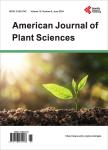Assessing Change of Lamto Reserve Area Based on the MODIS Time Series Data and Bioclimatic Factors Using BFAST Algorithms
Assessing Change of Lamto Reserve Area Based on the MODIS Time Series Data and Bioclimatic Factors Using BFAST Algorithms作者机构:School of Soil and Water Conservation Beijing Forestry University Beijing China School of Ecology and Nature Conservation Beijing Forestry University Beijing China Department of Forestry and Wildlife Management Federal University Dutse Dutse Jigawa State Nigeria School of Economics and Management Beijing Forestry University Beijing China Institute of Desertification Studies Chinese Academy of Forestry Beijing China
出 版 物:《American Journal of Plant Sciences》 (美国植物学期刊(英文))
年 卷 期:2022年第13卷第4期
页 面:517-540页
学科分类:0710[理学-生物学] 071001[理学-植物学] 07[理学]
主 题:Assessing Break Change Detection Land Cover Climate Extreme Vegetation Vulnerability
摘 要:Lamto Reserve area is a savannah landscape threatened by periodic drought, and anthropogenic activities leading to natural ecological imbalance. The ecological support services of the landscape had been significantly impacted by the grassland ecosystem. The Breaks for Additive Season and Trend Algorithms have been implemented in R to analyze the land cover/land use dynamic in relation to the climatic driver of Lamto forest from 2000 to 2020. We examine the vegetation state breaks using vegetation phenological patterns, and several time series including the Normalized Difference Vegetation Index and the Enhanced Vegetation Index, were studied utilizing Breaks for Additive Season and Trend. The findings indicate that the phenological changes in the vegetation in 2020 resulted from an increased temperature from (27.7°C) to (32.17°C), and a decrease in precipitation (71.75 millimeters). The analysis of variance ANOVA of the non-parametric Mann-Kendall test reveals a strong correlation between Precipitation/Evapotranspiration Grass (p mperature/Evapotranspiration Grass (p 0.311), and Temperature/Normalized Difference Vegetation Index (p in vegetation detected by the Breaks for Additive Season and Trend Algorithms were caused by temperature extremes and reduced rainfall.



